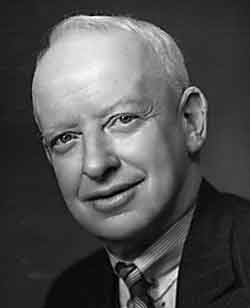Sidney Hartley Jenkinson
 Jenkinson who was the designer of the Ab Locomotive is a man of some importance in the context of this site. Not only did he contribute to technology in New Zealand; also, he typifies the men who were to the forefront in what has been called the second industrial revolution, having a facility with mathematics and an ability to apply theoretical ideas to practical engineering problems. Like other technologists of his time, Jenkinson believed strongly in the necessity to use science in industry.
Jenkinson who was the designer of the Ab Locomotive is a man of some importance in the context of this site. Not only did he contribute to technology in New Zealand; also, he typifies the men who were to the forefront in what has been called the second industrial revolution, having a facility with mathematics and an ability to apply theoretical ideas to practical engineering problems. Like other technologists of his time, Jenkinson believed strongly in the necessity to use science in industry.
The Great Crusade
He also reflected the attitudes of New Zealanders of his age in regarding his country as an integral part of the British Empire. He talked of "the great crusade on which depends so much the future welfare of the whole British nation – the application of industrial knowledge to science, and the consequent killing of that spent attitude of "splendid isolation" from anything practical or useful which has characterised the majority of our scientific workers in the past and prevented full use being made of the magnificent discoveries of their genius." (ref Steel-Casting Furnaces under New Zealand Conditions, New Zealand Journal of Science &Technology Vol 1 p76 March 1918).
Jenkinson was a third generation New Zealander; his grandfather was Dunedin’s first Harbourmaster, while one of his uncles was a boilermaker, bike builder and subsequently a Legislative councillor. His father, also called Sidney, was a journalist who moved to Australia to become sub-editor on the Melbourne Argus but then returned to New Zealand as general manager of the New Zealand Times.
Jenkinson and Cull
S H Jenkinson graduated from Canterbury University College in Mechanical Engineering. Here he became friends with J E L Cull and got involved in trials on ironsands smelting.
After graduation he went to America to further his technical education, and gained extensive practical experience in iron and steel works. Returning to New Zealand, he became a draftsman in the Railways Department in 1905. In January that year he and Leo Fanning surveyed North Island west coast beaches to determine the extent of the iron sands deposits.
True to his heritage, Jenkinson distinguished himself both as an engineer and as a writer. He published a number of papers in technical journals on both railway engineering and iron and steel manufacture, and was a writer of prose and verse, being said to have a distinctive flair for the written word.
“New Zealanders and Science”
In 1940, he contributed a book "New Zealanders and Science" to the Centennial series, pointing out the unprecedented situation which had occurred at the establishment of New Zealand’s first university, the University at Otago where, for the first time in English or colonial universities, a chair of science was one of the foundation chairs and equally ranked with the others.
His papers in the New Zealand Journal of Science &Technology show that he applied his mathematical abilities to a range of problems in locomotive design, including the design of laminated springs and locomotive balancing. His design of plate springs, which he developed, from the theoretical concepts, became the standard practice for New Zealand locomotives.
Back to Steam Railways

